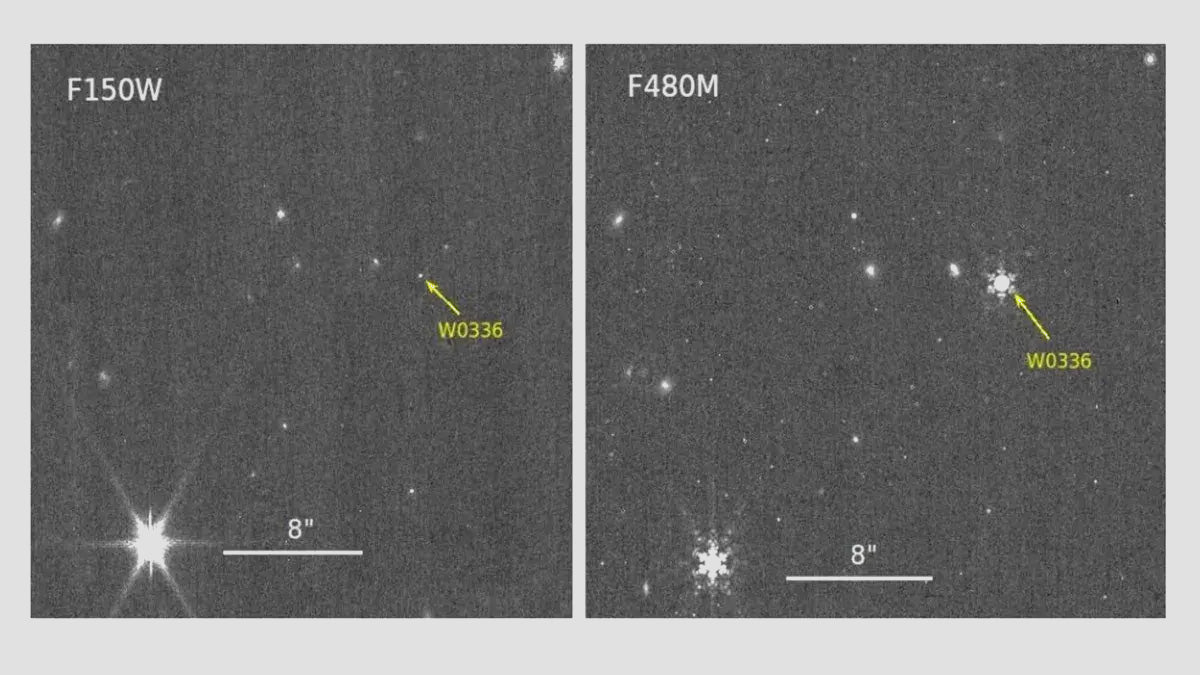First known binary system composed of two Y-type brown dwarfs

Using the Near Infrared Camera (NIRCam) onboard the James Webb Space Telescope (JWST/Webb), an international team of astronomers has made a remarkable discovery: the first known binary system composed of two Y-type brown dwarfs. This groundbreaking finding was reported in a research paper on March 29, 2023.
What the Y-type brown dwarf is?
Brown dwarfs are intermediate substellar objects that are neither planets nor stars. They have masses below the hydrogen-burning limit, which is about 80 Jupiter masses. One subclass of brown dwarfs, with effective temperatures lower than 500 K, is known as Y dwarfs. Y dwarfs represent the coolest and least luminous substellar objects that have been detected so far.
The object of new discovery
The team of astronomers, led by Per Calissendorf of the University of Michigan in Ann Arbor, made their recent discovery using the James Webb Space Telescope as part of a JWST Cycle 1 GO program, which involved a survey of 20 Y dwarfs.
The object in question, WISE J033605.05−014350.4 (or W0336 for short), is a nearby brown dwarf of spectral type Y0 that was initially detected in 2012 with NASA's Wide-field Infrared Survey Explorer (WISE). It is located some 32.7 light-years away in the constellation Eridanus and has an effective temperature of about 460 K.
Read more:
- The Earthrise Photo: A Journey Through Earth’s Iconic Space Portrait
- William Bill Anders Tribute: Astronaut, Earthrise Photographer, Aviator
James Webb Space Telescope uncovers young stars in NGC 346’s dusty ribbons
Hubble Telescope Captures a Stellar Trio: The Dawn of a Sun-like Star
JADES-GS-z14-0: NASA's JWST Discovering the Most Distant Galaxy
Enceladus holds potential for alien life with recent discovery of vital element
Anticipating the celestial show – Betelgeuse's potential supernova event
Supernova 2020eyj: First radio signal from the massive explosion of a dying white dwarf
Details of the observation
The observations made by the team of astronomers with NIRCam on JWST with the F150W and F480M filters revealed the presence of a companion object to W0336.
Employing an empirical point spread function binary model to identify the companion, they found that it was located at a projected separation of 0.''084, with a position angle of 295 degrees and a contrast of 2.8 and 1.8 magnitudes in F150W and F480M, respectively. This led to the discovery of the first brown dwarf binary system with a Y dwarf primary.
The observations detected a faint companion to W0336 at a physical separation of approximately 0.97 AU from it. The newfound object has a mass between five and 11.5 Jupiter masses, and its effective temperature is estimated to be 325 K. Therefore, the companion was classified as a Y-type brown dwarf.
The primary brown dwarf is estimated to be between 8.5 and 18 times more massive than Jupiter, with an effective temperature of about 415 K. The system has an orbital period of seven years, and its age is assumed to be 1–3 billion years. However, the evolutionary models suggest that the binary W0336 may be even older than 5 billion years.
Check also:
Binary or peculiar system?
The researchers noted that W0336 is a tightly bound system with a relatively low mass ratio (of about 0.61), which contrasts with other known binaries containing a Y-type brown dwarf. This leads to the question of whether such systems represent the true binary population of ultracool dwarfs or can be considered as peculiar systems.
Summary
To gain more insight into the properties of both Y dwarfs, the authors of the paper suggest follow-up spectroscopic and photometric observations of W0336 over a wide wavelength range. These observations could provide further evidence about the characteristics of this fascinating binary system and help astronomers better understand the behavior of brown dwarfs.
References
- Nowakowski T., First Y brown dwarf binary system discoverd, Phys.org, [25.04.2024]
- Calissendorff P. et al, JWST/NIRCam discovery of the first Y+Y brown dwarf binary: WISE J033605.05$-$014350.4, arXiv (2023). DOI: 10.48550/arxiv.2303.16923, [25.04.2024]


![Vera C. Rubin Observatory: Revolutionizing Astronomy Through the World's Most Advanced Telescope [All You Need To Know]](http://astrography.com/cdn/shop/articles/vera-c.-rubin-observatory_main.webp?v=1751627507&width=1080)

Leave a comment